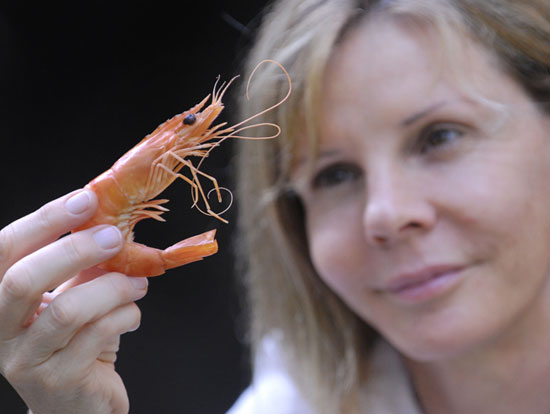Prawn Sex Tapes Reveal Lack of Lust

One researcher has watched hours of prawn "sex tapes" to figure out why prawns reared in captivity have little interest in doing the deed. Her findings from the prawnography: the shellfish are missing the chemical link for lust.
Gay Marsden, a researcher at Queensland University of Technology in Australia, spent two months filming what black tiger prawns (Penaeus monodon) got up to in the sack.
These prawns are important to the Australian aquaculture industry, but those that were bred in captivity weren't producing as many spawn as their wild brethren.
"When prawns are caught from the wild and put into tanks, they have no problem breeding," Marsden said. "It is a different story for the prawns reared in captivity."
Though wild prawns breed like crazy, spawning millions of eggs, "viruses can be introduced by wild broodstock, and in high density ponds, crops can be wiped out in days," Marsden said.
So captive-bred broodstock are preferred because they can be protected from diseases. But their seemingly non-existent interest in sex was a bit of a barrier to producing prawns for seafood lovers.
"It was suspected that prawns bred in captivity weren't interested in sex but very little was known about why this was the case, so I undertook the study to try to find out," Marsden said.
Get the world’s most fascinating discoveries delivered straight to your inbox.
Marsden used infrared cameras to compare the bedroom behavior of captive-bred prawns with the wild variety.
Typically, "males mate with females after the females molt, when they have lost their shells their bodies are soft and can be implanted with sperm," Marsden said. "But when I looked at the videos of the captive-reared prawns, when the females molted, the males weren't interested, indicating pheromones [from the females] were lacking," she added.
But it wasn't just the females who lacked a sex drive, as the males "weren't very receptive to what pheromones there were," Marsden said.
To rekindle the spark between the captive-bred prawn, Marsden has been looking at improved nutrition and the effect of different hormones, though she says that further research needs to be done to figure out why the pheromone systems are working properly.
- Video: Crustacean Mystery
- 10 Amazing Things You Didn't Know About Animals
- Animal Sex: No Stinking Rules



